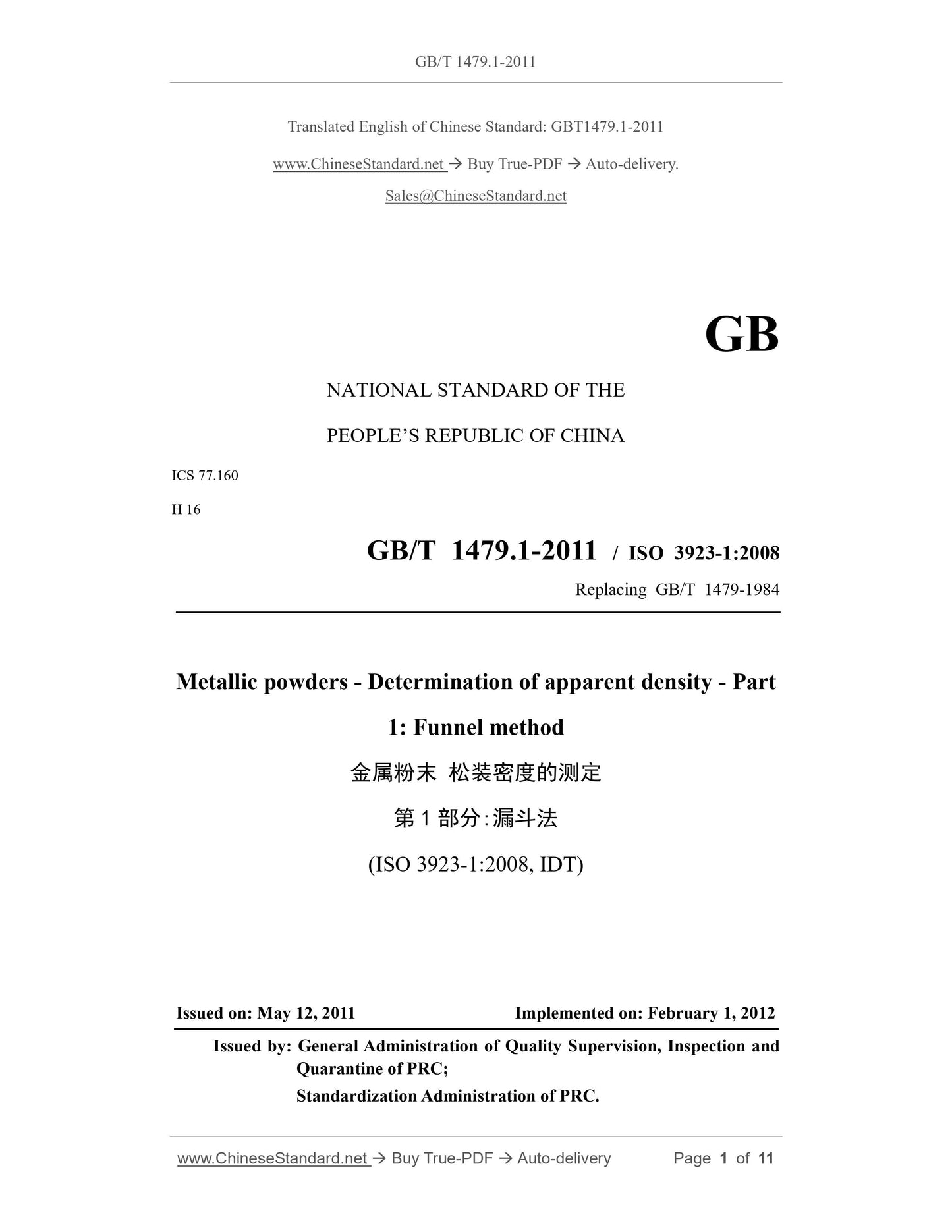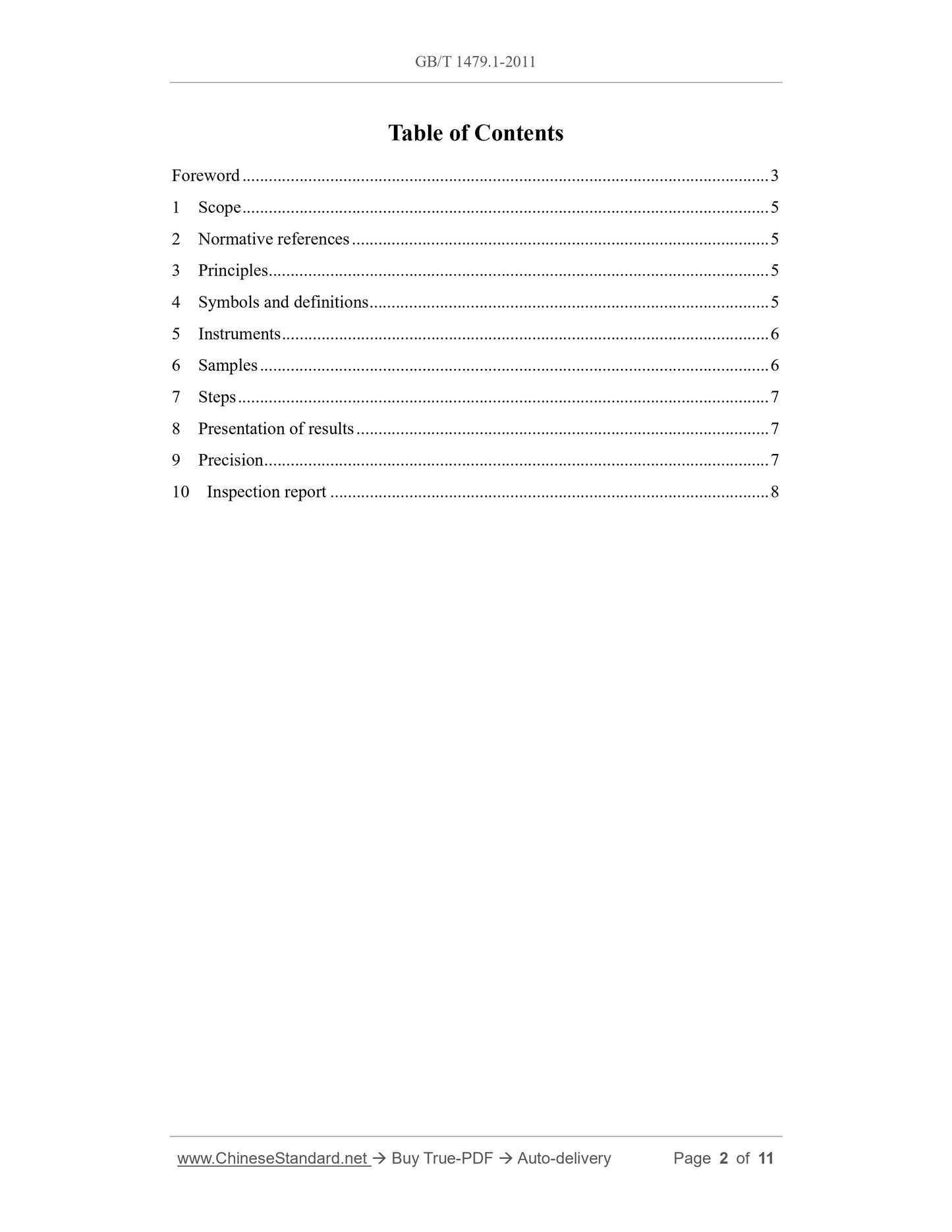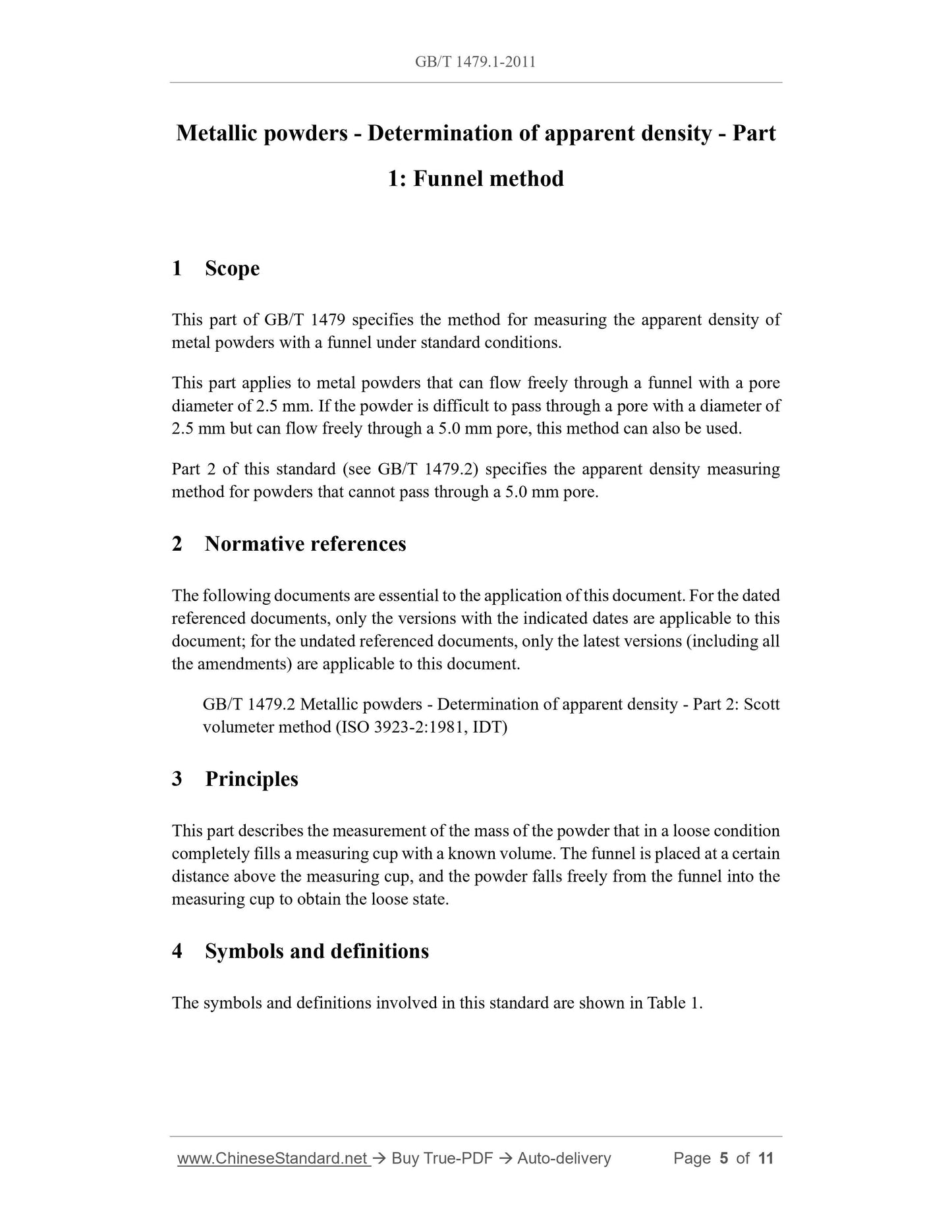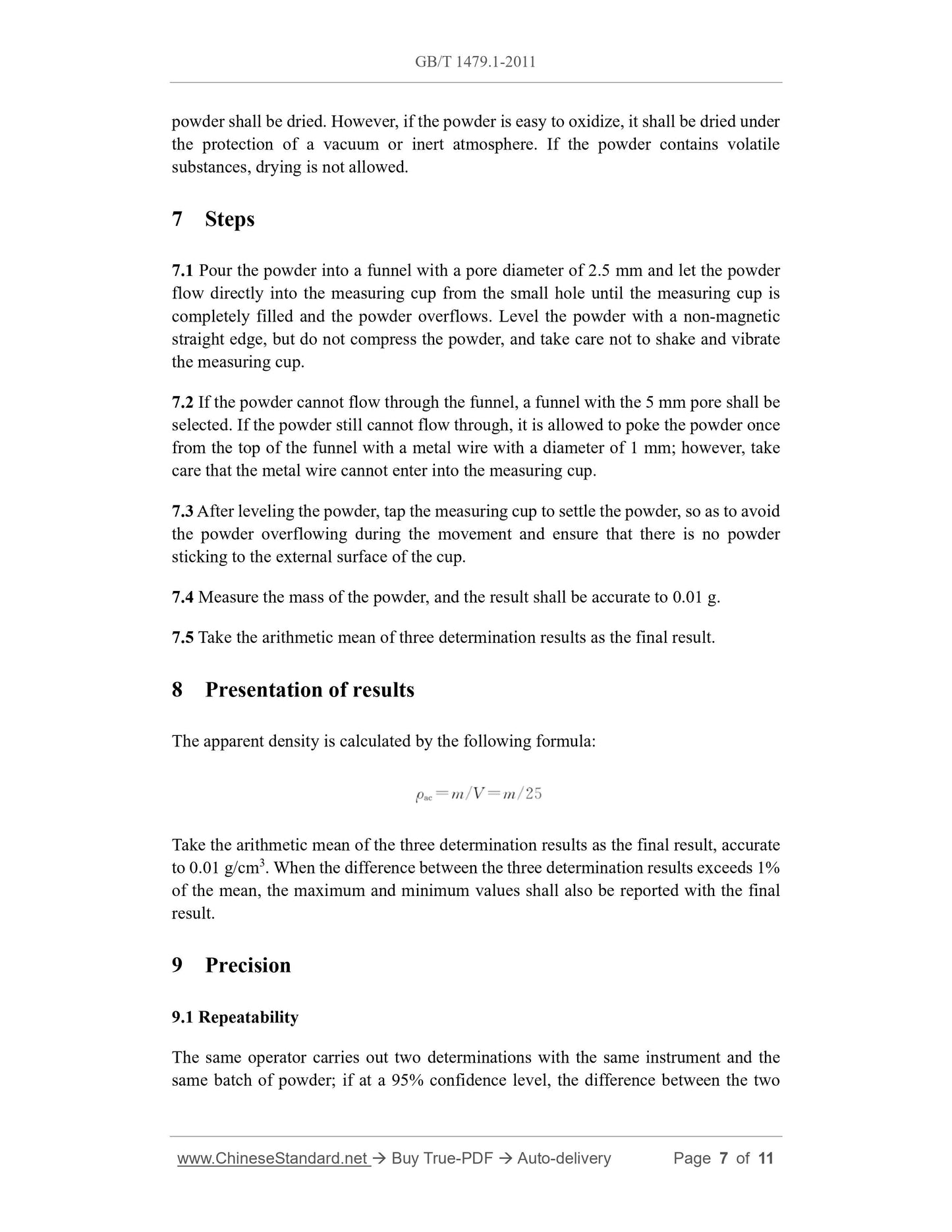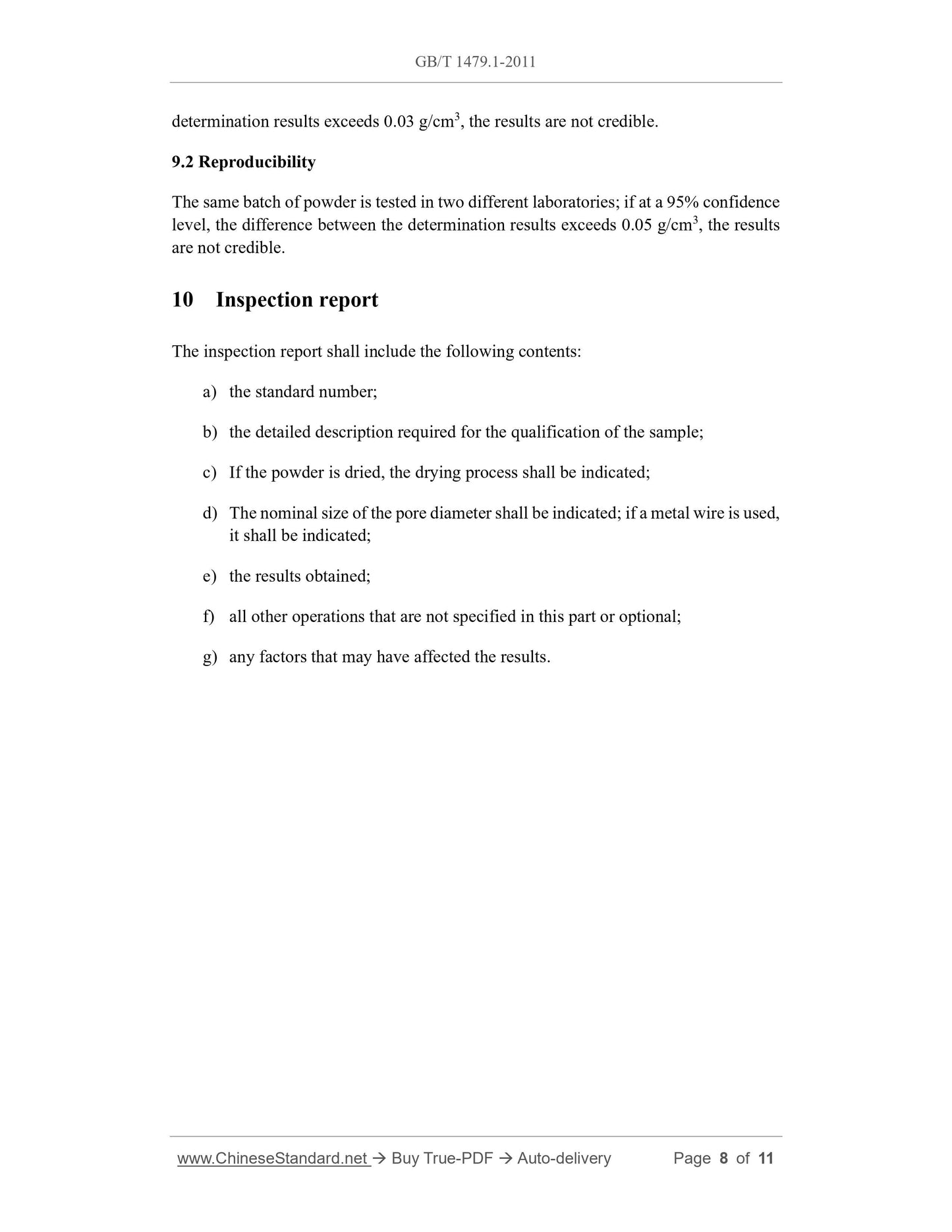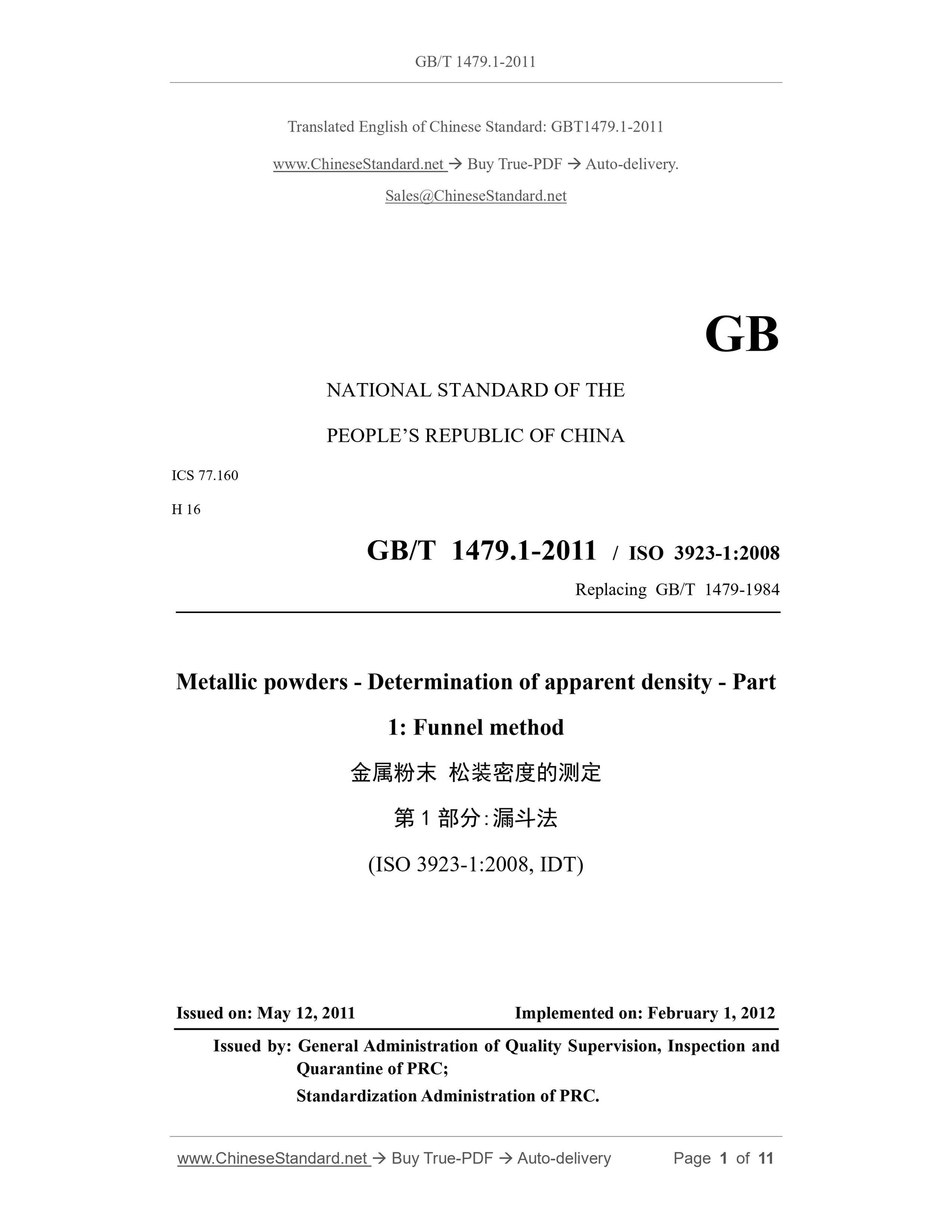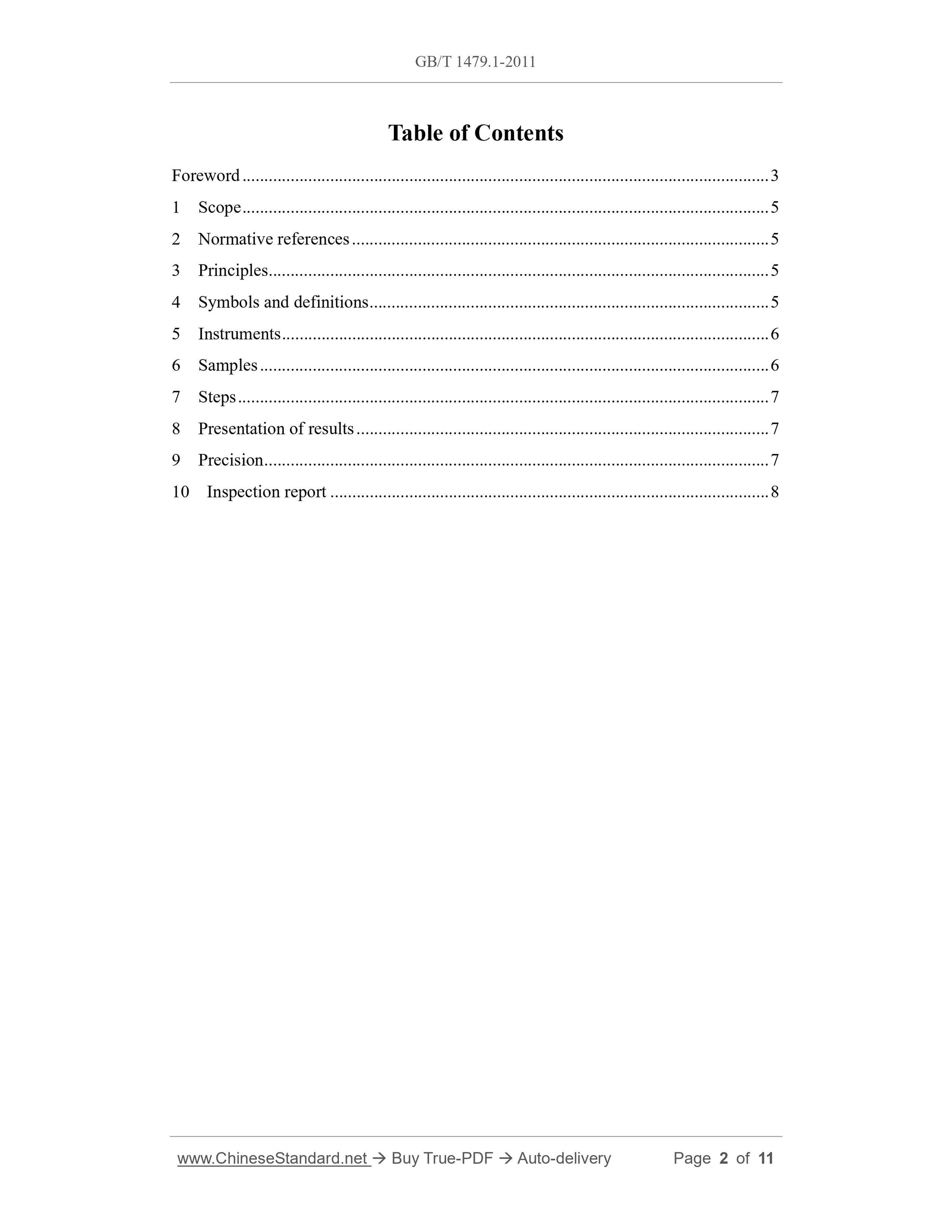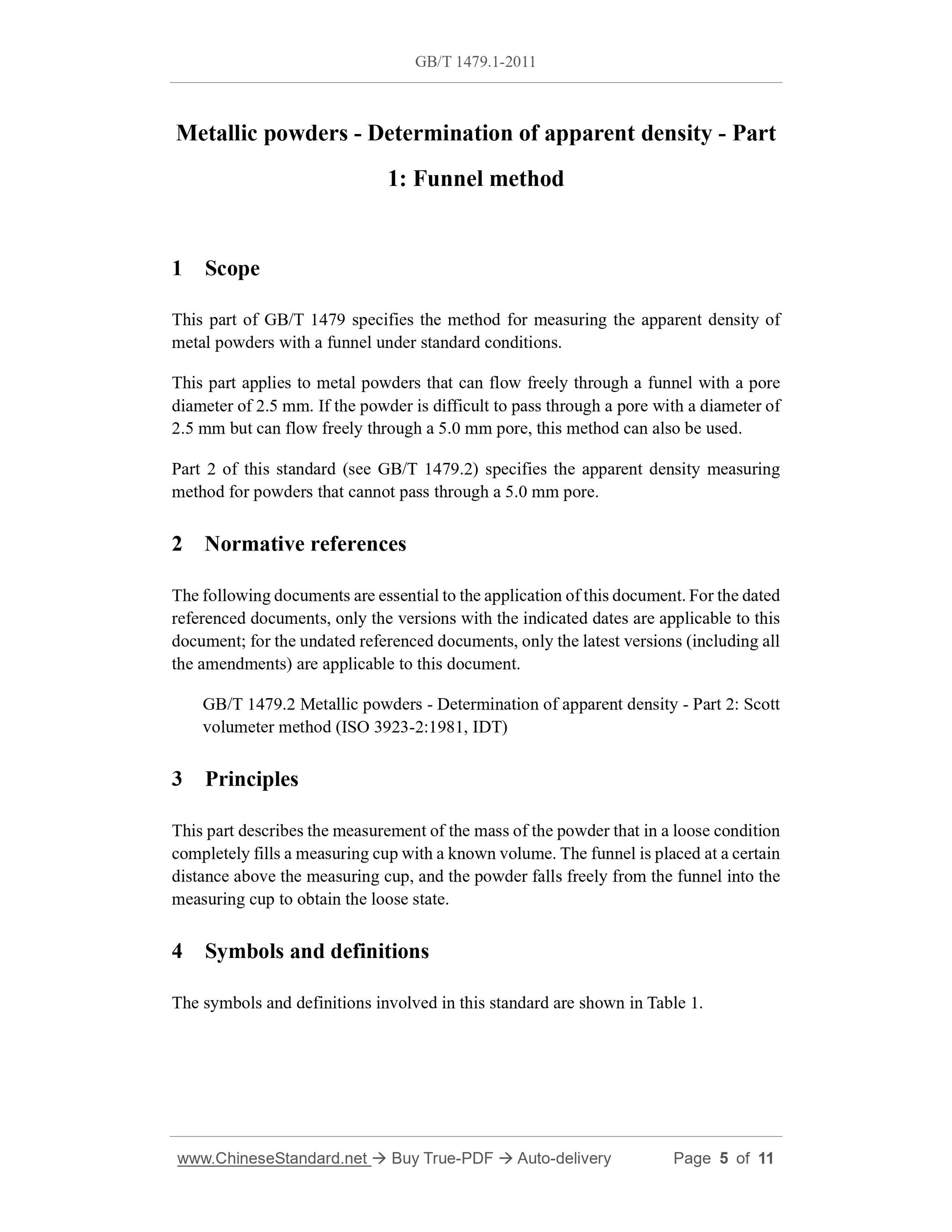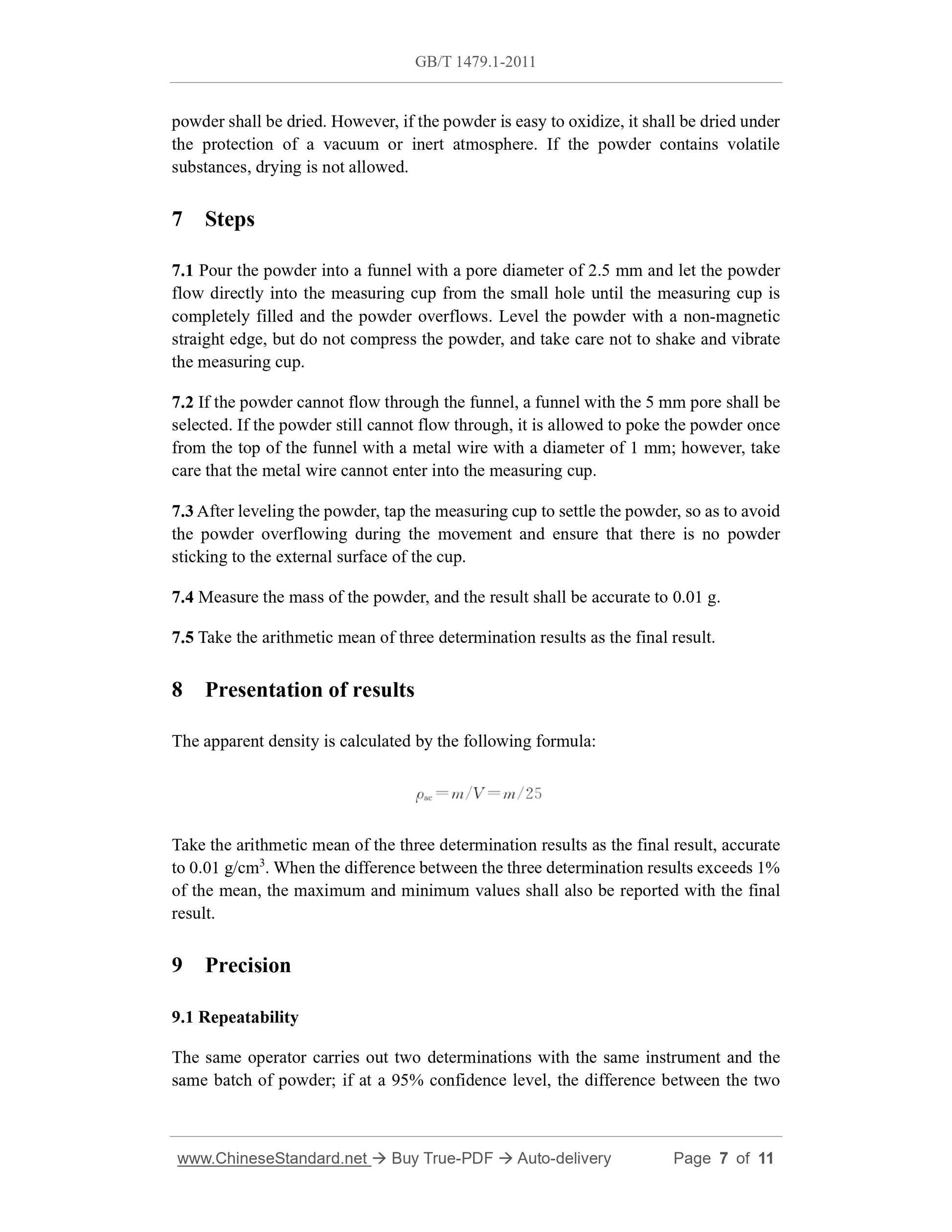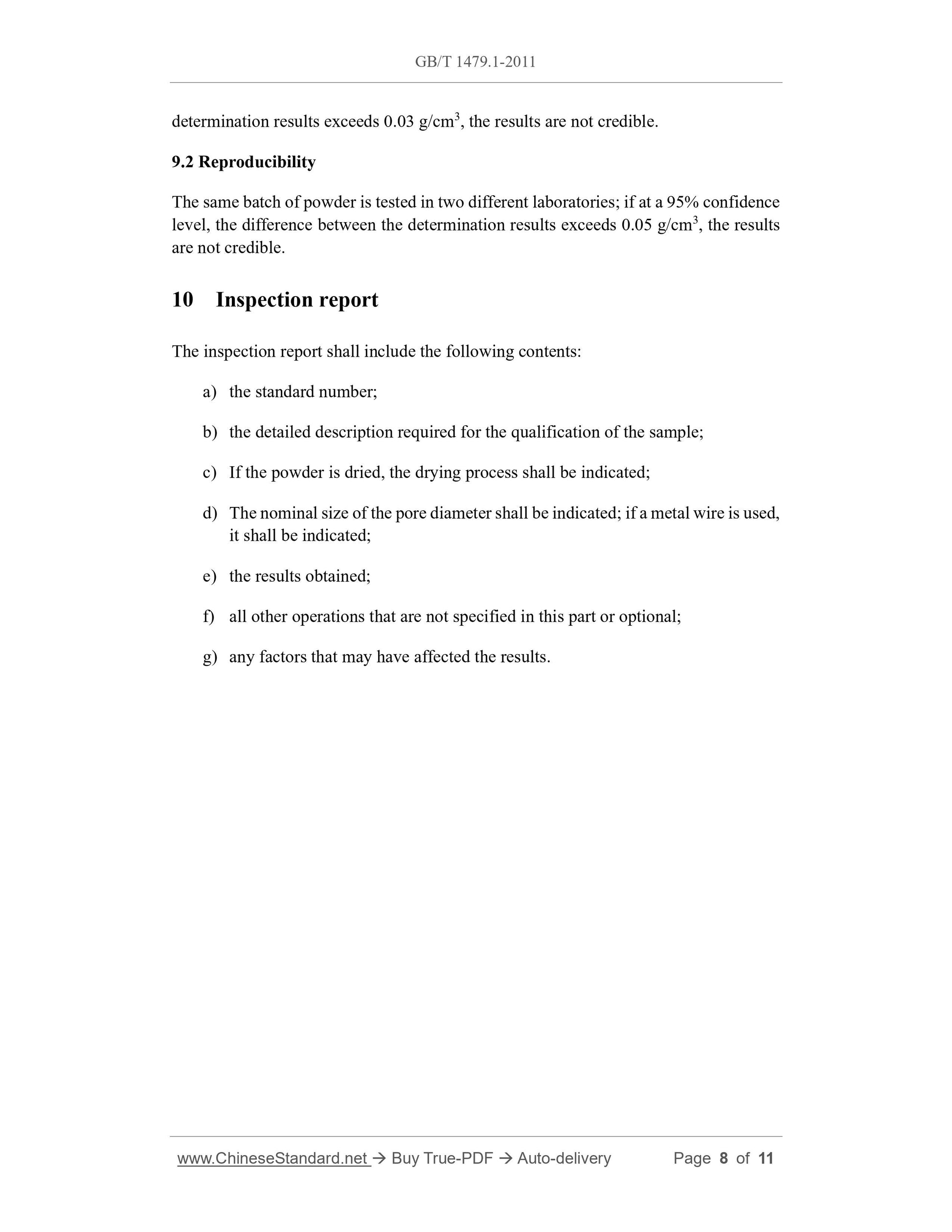1
/
of
5
www.ChineseStandard.us -- Field Test Asia Pte. Ltd.
GB/T 1479.1-2011 English PDF (GB/T1479.1-2011)
GB/T 1479.1-2011 English PDF (GB/T1479.1-2011)
Regular price
$170.00
Regular price
Sale price
$170.00
Unit price
/
per
Shipping calculated at checkout.
Couldn't load pickup availability
GB/T 1479.1-2011: Metallic powders -- Determination of apparent density -- Part 1: Funnel method
Delivery: 9 seconds. Download (and Email) true-PDF + Invoice.Get Quotation: Click GB/T 1479.1-2011 (Self-service in 1-minute)
Newer / historical versions: GB/T 1479.1-2011
Preview True-PDF
Scope
This part of GB/T 1479 specifies the method for measuring the apparent density ofmetal powders with a funnel under standard conditions.
This part applies to metal powders that can flow freely through a funnel with a pore
diameter of 2.5 mm. If the powder is difficult to pass through a pore with a diameter of
2.5 mm but can flow freely through a 5.0 mm pore, this method can also be used.
Part 2 of this standard (see GB/T 1479.2) specifies the apparent density measuring
method for powders that cannot pass through a 5.0 mm pore.
Basic Data
| Standard ID | GB/T 1479.1-2011 (GB/T1479.1-2011) |
| Description (Translated English) | Metallic powders -- Determination of apparent density -- Part 1: Funnel method |
| Sector / Industry | National Standard (Recommended) |
| Classification of Chinese Standard | H16 |
| Classification of International Standard | 77.160 |
| Word Count Estimation | 9,917 |
| Date of Issue | 2011-05-12 |
| Date of Implementation | 2012-02-01 |
| Older Standard (superseded by this standard) | GB/T 1479-1984 |
| Quoted Standard | GB/T 1479.2 |
| Adopted Standard | ISO 3923-1-2008, IDT |
| Regulation (derived from) | Announcement of Newly Approved National Standards No. 6 of 2011 |
| Issuing agency(ies) | General Administration of Quality Supervision, Inspection and Quarantine of the People's Republic of China, Standardization Administration of the People's Republic of China |
| Summary | This standard specifies the funnel under standard conditions with metal powder bulk density measurement method. This section applies to freely flow through the aperture of 2. 5mm metal powder funnel. If the powder is difficult to pass a 2. 5mm diameter holes, but can freely flow through the 5. 0mm hole, the method can also be used. In this standard, Part 2 (see GB/T 1479. 2) can not be specified in a 5. 0mm diameter of the powder bulk density measurement method. |
Share
